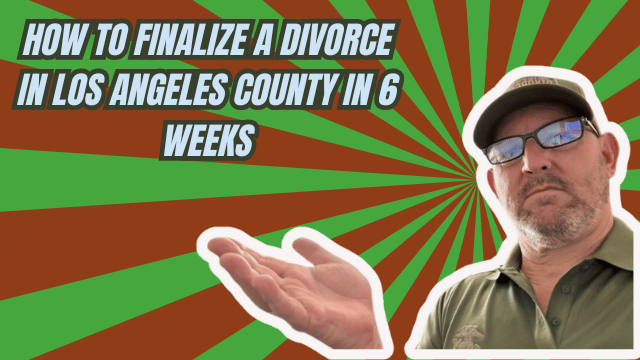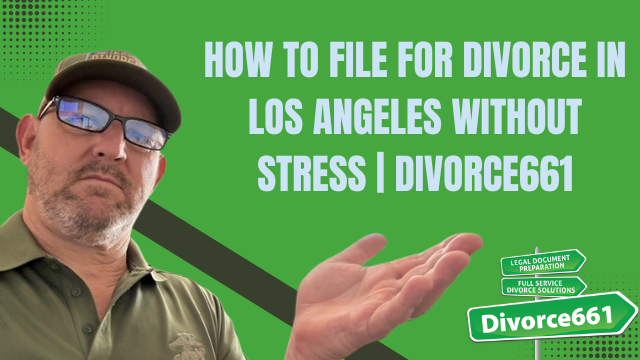How to Finalize a Divorce in Los Angeles County in 6 Weeks
Think divorces drag on forever? Think again.
I’m Tim Blankenship from Divorce661. If you’re in Los Angeles County and your divorce is amicable, you can realistically have your paperwork filed, reviewed, and approved by the court in as little as six weeks. That doesn’t erase the mandatory six‑month waiting period in California, but by front‑loading every step we can get you to a fully approved judgment quickly — so all that’s left is the clock.
Why people think divorce takes forever (and why it doesn’t)
Most delays come from slow starts: late filing, incomplete disclosures, settlement negotiations that drag on, and missed court deadlines. The truth is, for uncontested, cooperative cases, the court process itself can move quickly when the paperwork is correct and submitted promptly. We use e‑filing and a systematic approach to eliminate unnecessary waiting.
The fast 6‑week approach — step by step
Here’s the exact flow we follow to get a case to court approval fast.
Week 1: File and serve immediately
- E‑file the petition within days so the formal process begins without delay.
- Serve your spouse right away — the six‑month waiting period in California starts on the date your spouse is served.
Weeks 1–3: Complete disclosures and the settlement agreement
- Exchange required financial disclosures quickly and accurately.
- Negotiate and finalize a settlement agreement (property, support, custody if applicable).
- Because both parties are cooperative, these steps are completed remotely and efficiently.
Week 4–6: Submit the full judgment package
- Assemble the complete judgment package — paperwork must be accurate and court‑ready.
- E‑file the package for court review. A correct, thorough filing prevents rejections and avoids extra court delays.
- Once approved, the file is complete. The six‑month statutory waiting period still must run, but there’s nothing left for you to do.
Key details: the six‑month waiting period
California law requires a six‑month waiting period from the date your spouse is served before a judgment can be entered. We can’t shorten that statutory period — but we can complete everything in advance so you don’t waste months waiting for paperwork to be finished. That’s what “finalize in six weeks” really means: get the court approval done in six weeks so the only remaining step is the mandated waiting clock.
Real example: approved in under 5 weeks
We recently helped a couple whose entire judgment package was approved in under five weeks. Their case is now fully approved — they’re simply waiting out the six‑month clock. No court appearances, no back‑and‑forth, and no outstanding tasks. That’s the outcome we aim for with cooperative clients.
Why accuracy and speed matter
Court clerks reject filings for incomplete or incorrect forms. Rejections create weeks of delay. By using experienced professionals who know Los Angeles County requirements and e‑filing best practices, you minimize the chance of rejection and keep the process moving. Speed only helps if it’s paired with accuracy.
Why work with Divorce661?
- Flat‑fee, full‑service divorce — no surprise billing.
- 100% remote process — everything handled online; no court appearances required for most uncontested cases.
- Fast e‑filing and same‑day service options to get your case started immediately.
- Experience with L.A. County paperwork to avoid common pitfalls and rejections.
Is this right for you?
The six‑week timeline is designed for amicable, uncontested divorces where both parties agree on the terms and cooperate with disclosures. If there are disputes about property, support, custody, or if one party is uncooperative, the timeline will be longer. If you meet the amicable criteria, the streamlined approach saves time, stress, and money.
Next steps
If you’re ready to get started, we offer a free consultation to assess your situation and explain how we can move your case forward quickly and correctly. Visit Divorce661.com to schedule your free consultation and learn how to get your case filed, approved, and behind you fast.
Take the first step toward a new chapter — efficient, accurate, remote, and done right.










